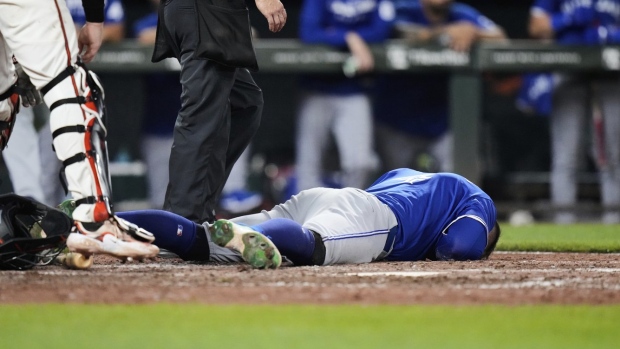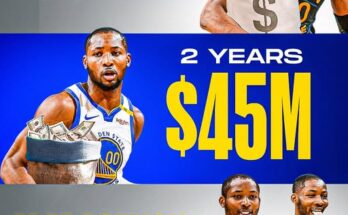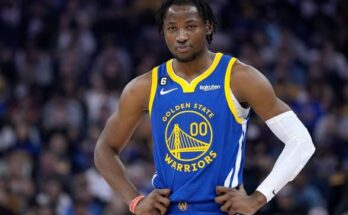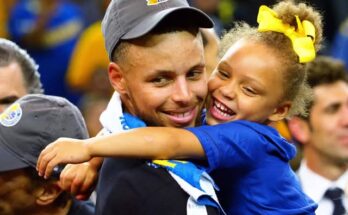George Springer ‘Doing All Right’ After Scary Head Injury From 96 MPH Fastball Leaves Blue Jays Fans Holding Their Breath
Toronto Blue Jays designated hitter George Springer provided a collective sigh of relief for fans and teammates alike after confirming he is “doing all right” following a terrifying moment in a recent game against the Baltimore Orioles. The veteran slugger was struck in the head by a 96-mph fastball, an incident that instantly silenced the crowd and brought medical staff rushing to his aid. While the play itself lasted just seconds, the emotional weight of the moment continues to ripple throughout Major League Baseball, highlighting the risks that even the game’s most seasoned professionals face every time they step into the batter’s box.
The scene unfolded during a tense midgame at Camden Yards, where both clubs were locked in a crucial American League showdown with playoff implications. Springer, known for his aggressive approach at the plate and ability to work deep into counts, dug in for what appeared to be a routine at-bat. But as the pitch flew out of the Orioles pitcher’s hand, it veered sharply up and in—far from its intended target—and drilled Springer directly on the left side of his helmet. The ball ricocheted with a sharp crack, the kind of sound that hushes even the most raucous crowd. In that moment, baseball took a back seat to fear.
Springer immediately dropped to a knee, visibly shaken but somehow conscious and responsive. Teammates quickly signaled to the dugout while Orioles players stood frozen in shock. Within seconds, Toronto’s medical team surrounded him, checking for signs of a concussion and other trauma. Remarkably, Springer was able to walk off the field under his own power, though the decision was made to pull him from the game immediately and begin medical evaluations. While initial scans were promising, the team placed him into the MLB’s concussion protocol as a precaution, and he was closely monitored over the following 24 hours.
The incident sparked widespread concern across the baseball world. George Springer is more than a power bat or a three-time All-Star—he’s one of the game’s most respected veterans, a World Series MVP, and a clubhouse leader known for his energy, toughness, and humility. His health and availability are critical to the Blue Jays’ postseason hopes, but far more important in the moment was simply knowing he was okay. As reports surfaced later that evening confirming Springer was “doing all right” and resting comfortably, social media lit up with messages of support from fans, fellow players, and media personalities.
For the Blue Jays, the immediate impact of Springer’s potential absence looms large. The designated hitter spot has been a key part of their offensive engine, with Springer often setting the tone early in games and driving momentum late in them. He’s also a calming veteran presence in a young, high-expectation clubhouse. If he misses time, Toronto may have to reshuffle its batting order, potentially calling on younger or less-proven players to step into one of the most crucial spots in the lineup. In a tight playoff race where every game matters, even a short stint without their DH could alter the club’s momentum.
From a search engine optimization perspective, this incident is one of the most viral moments of the week. High-traffic keywords and long-tail search terms like “George Springer hit in head injury update,” “Blue Jays DH head injury news,” “Springer concussion protocol update,” and “Springer vs Orioles 96 mph pitch injury” are trending across sports news platforms and fan forums. By writing authentic, accurate content using these terms—while maintaining an empathetic tone—publishers can capture a high-intent audience that’s both concerned for Springer’s health and curious about the Blue Jays’ next moves.
What’s striking is how moments like these humanize the game. While fans often celebrate jaw-dropping home runs or no-hitter bids, the raw vulnerability displayed when a player like Springer takes a pitch to the head reminds us all how dangerous baseball can be. Protective gear and protocols have improved dramatically in recent years, but there is no true defense against the unpredictability of a 96-mph projectile delivered from just 60 feet away. Even the best hitters—those with elite reaction times and years of experience—can find themselves in sudden, life-altering danger.
Springer’s own history as a player speaks volumes about his toughness. He’s battled injuries before, including oblique strains, quad issues, and wrist soreness, yet consistently bounces back with resilience. What sets him apart, though, is his mindset. Never one to seek attention, Springer has always led by example—through hustle, preparation, and the joy he brings to the field. The fact that his first public response to the injury was a reassuring “I’m doing all right” reflects not only his physical strength but also his desire to keep his teammates and supporters from worrying.
Teammates have since expressed their relief and admiration. Several players noted that Springer was already cracking jokes in the clubhouse later that evening, eager to turn the page and get back to doing what he loves. However, the Blue Jays medical staff will remain cautious. Head injuries, even when symptoms appear mild, can have delayed consequences. The league’s protocols require players to pass a series of cognitive and physical tests before returning to action, and Toronto is in no rush to accelerate that timeline. The goal is long-term health, not short-term wins.
Meanwhile, the Orioles have handled the incident with class. The pitcher involved reportedly reached out to Springer postgame to express his concern and well wishes. In a sport known for its rivalries and heated competition, there’s a mutual respect among players that transcends team colors, and this moment only reinforced that bond. The Orioles’ manager and several players echoed support during their press conferences, making clear that no malice was involved and that everyone in the building shared the same hope—for a full and fast recovery.
With the Blue Jays still firmly in postseason contention, Springer’s return will be critical. But even more important is ensuring he’s 100% ready—physically and mentally—before stepping back into the box. Brain injuries, even when they appear minor, can carry long-term effects, and both Springer and the team understand the stakes. In the meantime, Toronto will look to its deep roster for temporary solutions, likely turning to players who’ve seen limited action this year to fill the void.
This story, while rooted in a moment of fear, is also one of relief. George Springer avoided what could have been a far more serious outcome. His quick response, the team’s medical handling, and the league’s updated protocols all played a role in ensuring he remained safe. But the incident will linger in the minds of fans, teammates, and opponents alike. It’s a reminder of the unpredictable nature of professional sports, the strength of the athletes who play them, and the moments that bring us together in support—regardless of who we root for.
As the Blue Jays prepare for their next series, all eyes will remain on updates about Springer’s condition. His status will undoubtedly shape Toronto’s chances in the weeks ahead, but even more so, it reminds us what matters most in baseball: the well-being of the players who give everything to the game. For now, fans can breathe easier knowing George Springer is on the mend—and once he’s ready, the game will be better with him back in it.



